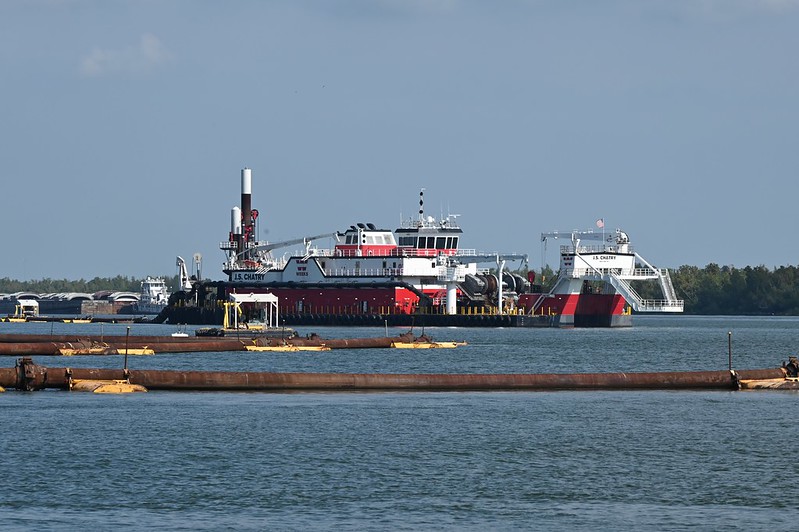Contractors for the U.S. Army Corps of Engineers work on raising a sill in the Mississippi River near Alliance to reduce the flow of saltwater upriver in 2023. (USACE photo)
Construction has begun on a saltwater sill near Myrtle Grove to help mitigate the effects of saltwater intrusion up the Mississippi River.
The U.S. Army Corps of Engineers awarded a construction contract to Weeks Marine to pile up sand in a hill along the bottom of the Mississippi to a height of minus-55 feet – that’s 55 feet below the surface of the river – in order to trap the traveling salt water and prevent it from invading drinking water supplies further upriver.
The sill will erode naturally when fresh water in the Mississippi river begins flowing enough to “push the saltwater wedge back down the river to the Gulf of Mexico,” according to a press release from the Army Corps.
Saltwater’s movement up the Mississippi River is a naturally occurring event, but low water levels in the river can allow salt water to move further upriver than it would otherwise. Normally, fresh water flows south, impeding the upstream movement of saltwater, which moves in a wedge shape because of its density. But low water levels in the Mississippi River this year have allowed the more-dense salt water from the Gulf to move further upstream underneath the river’s less-dense, flowing fresh water.
The Mississippi River is currently experiencing low water levels, which can exacerbate the effects of saltwater intrusion as well as impact shipping activities. Too much saltwater upstream in the river can threaten fresh water supply used for industry and drinking water.
The construction of the sill is a tactic to impede the wedge’s movement up the Mississippi as efforts to dredge the Mississippi’s deep-draft channel cause “an increase in the duration and extent of annual saltwater intrusion,” according to the Army Corps. Deepening the river allows larger ships to move upriver, allowing about $1 million in additional cargo per vessel for every 1 foot deeper the river becomes.
This isn’t the first time sills have been built to contain saltwater movement in the Mississippi. Similar efforts took place near Myrtle Grove in 1988, 1999, 2012, 2022 and 2023 at river mile 64 during low-water events. Last year’s sill, originally constructed at a height of minus-55 feet, was increased to a height of minus-30 feet when salt water began to creep over the top of the reservoir. The USACE plans to keep an eye out in case similar changes are needed this year.

